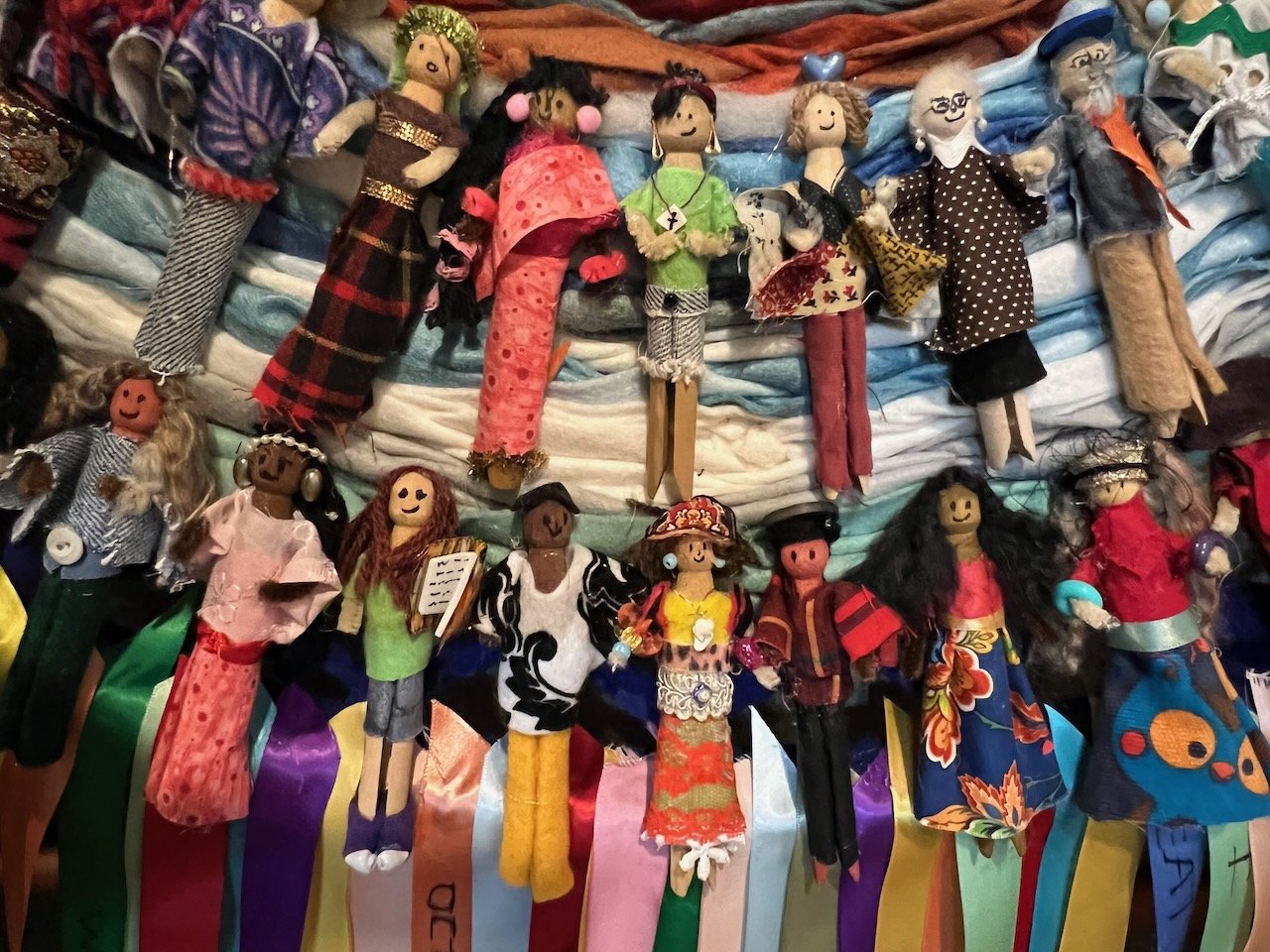Reflection on Community Art Projects
/By Madeline King
Madeline working at French Heritage Day, helping with En Plen air watercolor painting activity
During my internship at the Winooski Mill Museum, I assisted with the Story Quilt and the Community Mandala Weaving workshops. Both activities gave Winooski residents an opportunity to create and use art as a way to tell stories and connect with their community. I was excited to have this internship opportunity since I knew I would be moving to Winooski at the end of the summer, and it has allowed me to get to know the local history and my new community.
Both projects were great learning experiences, but my favorite was the Community Mandala. I liked hearing about the project’s background from artist Sarah Haskell, who held a workshop at the end of August for volunteers. The participants learned about the project’s three parts: weaving the mandala, crafting clothespin people to represent the community, and writing your favorite thing about Winooski on a ribbon. Meeting other volunteers during the workshop made me feel like part of a wider, connected Winooski community. This feeling grew as I got to share the creative process with everyone who contributed to the mandala during the Fiber Fair and Onion Fest.
closeup of Clothespin Dolls from Community Mandala
My favorite part of the project was making clothespin dolls with community members. Not only were they incredibly fun to make, but they also let the personality of the community shine brightly. One doll I will never forget was made during the Onion Fest by a little boy around two years old. I could tell that he was making up his design on the spot, but he had great fun while choosing fabric for a cape and a popsicle stick for a staff. By the time he came to me for gluing he was making a vampire. Every time I confirmed what he wanted me to glue, he would answer with a firm “Yes” as if that had been his plan all along. Now, every time I see his vampire in the mandala I will be reminded how much fun the little boy had while participating in the community project.
Interning at the Mill Museum has been a valuable experience and allowed me to plunge deeper into my study of Anthropology. This field is all about the people involved in a community. During my time at the Mill Museum I learned important anthropological skills and have grown in my ability to work with different groups within a community. These projects were a great way for me to dive into everything a museum has to offer and to give back to the area as a local college student.
Madeline King interned at the Mill Museum during the summer and fall of 2024. She grew up in Franklin County, Vermont and now lives in Winooski while attending the University of Vermont. She is a junior studying anthropology and astronomy.






















